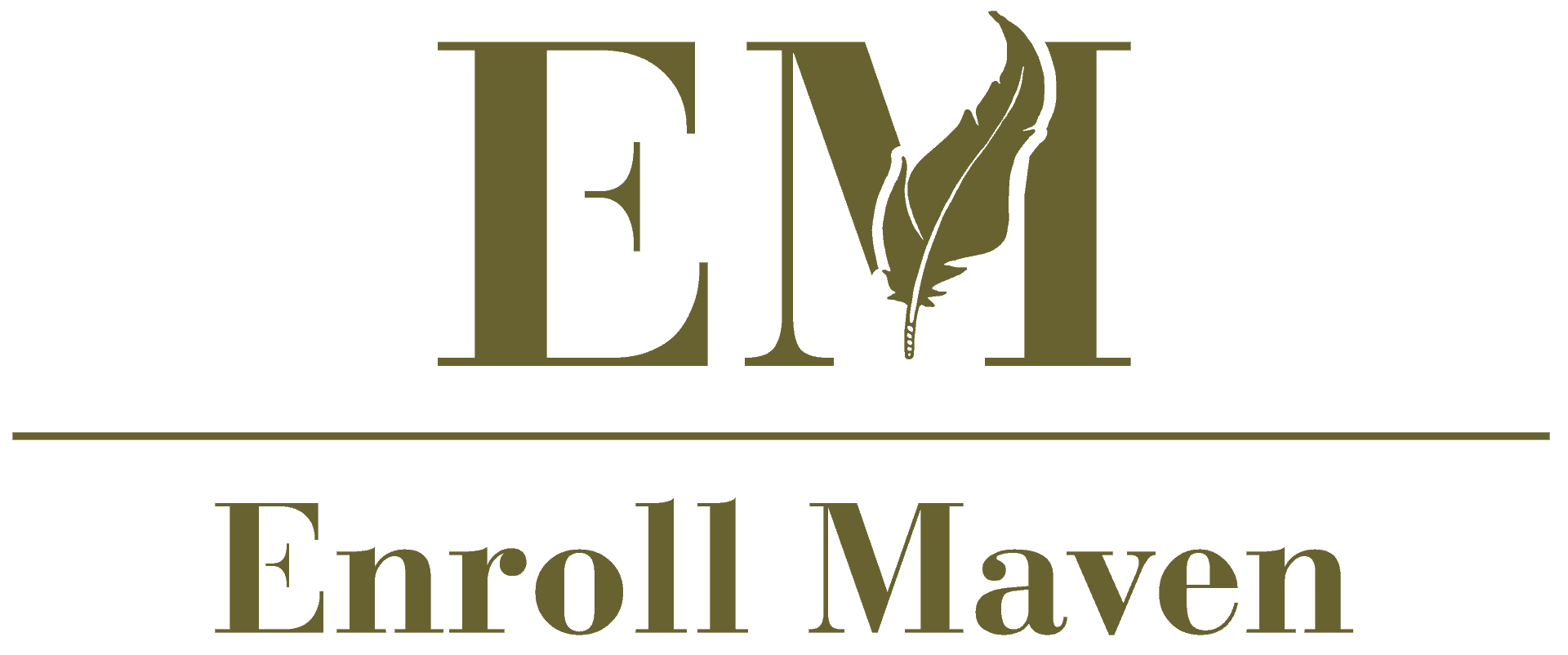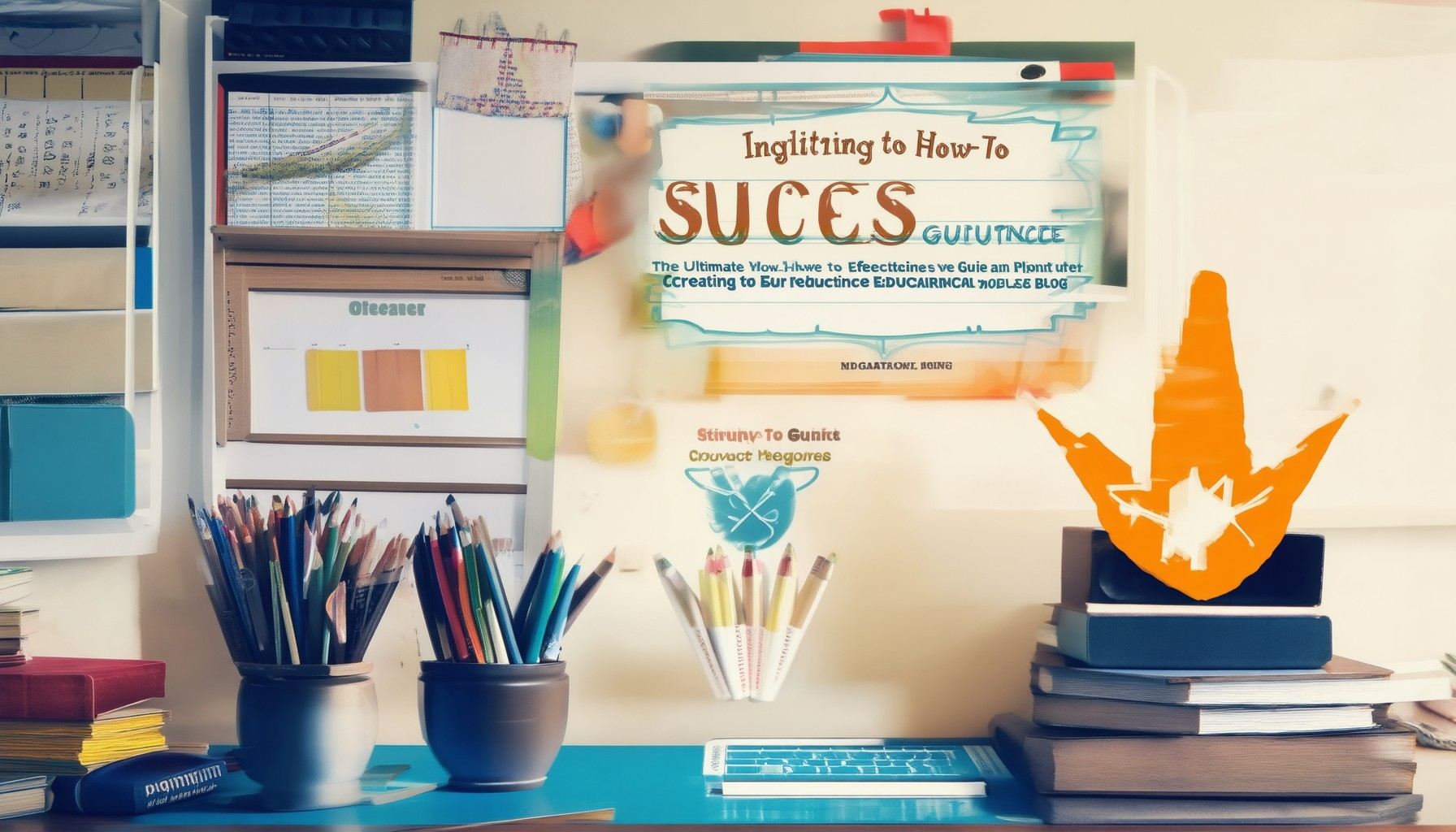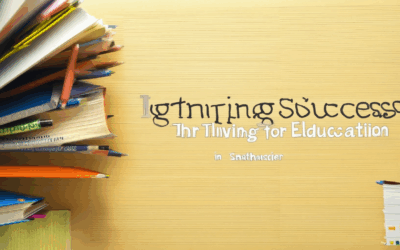In today’s fast-paced educational landscape, an effective educational resources blog can unlock potential, inspire learning, and connect educators, students, and families like never before. Whether you’re a teacher seeking innovative classroom tools, a student looking to stay ahead, or a parent eager to support your child’s growth, the right educational blog can be a game-changer. This guide dives into what makes an educational resource blog truly effective, explores real-world examples, and shares actionable steps to create one that resonates with your audience. By mastering the art of curating and creating high-quality content, you can transform your blog into a hub of knowledge, collaboration, and inspiration. Let’s embark on a journey to discover how to craft an educational resources blog that not only meets but exceeds expectations, benefiting both educators and learners alike.
Educational Resources Blog Plan
- Niche Selection
- Focus on study habits and exam preparation for students, aiming to provide practical strategies and resources tailored to their needs.
- Content Strategy
- Types of Posts: Develop guides, tutorials, and in-depth analyses on topics like time management, note-taking techniques, and stress reduction.
- Originality: Ensure content is original by exploring unique angles or combining existing information innovatively.
- SEO Optimization
- Keyword Research: Utilize Google Keyword Planner to identify relevant search terms related to study habits and exam prep.
- On-Page SEO: Optimize titles, meta descriptions, and headers with identified keywords.
- Mobile-Friendly Design: Implement responsive design principles to ensure the blog is accessible on all devices.
- Schema Markup: Use plugins or guides to correctly implement schema markup for better search engine understanding.
- Audience Targeting
- Primary Readers: Tailor content for students aged 13-18, educators, and parents.
- Content Adaptation: Offer content in various formats (text, audio, PDF) to cater to different learning preferences.
- Community Building
- Engagement Features: Include comment sections on posts and establish forums for discussions.
- Events: Host regular Q&A sessions via live streams or webinars using platforms like Zoom or YouTube Live.
- Posting Schedule
- Consistency: Aim for weekly posts to maintain engagement and build trust with the audience.
- Promotion and Distribution
- Social Media: Engage with educators and influencers on platforms like Twitter, Instagram, and LinkedIn.
- Email Newsletters: Build an email list for updates and exclusive content.
- Partnerships: Collaborate with educational influencers and bloggers for cross-promotion.
- Accessibility
- Translations: Provide content in multiple languages to expand reach.
- Formats: Offer downloadable resources like PDFs and audio files.
- Blog Structure
- Sections: Organize the blog into clear sections such as “Key Benefits,” “How to Start,” and “Components of Success” for logical navigation.
-
Integration of Enroll Maven
- Platform Utilization: Review Enroll Maven for recommended tools and possibly feature it in blog posts or as a recommendation for resource enhancement.
-
Success Measurement
- Tools: Use Google Analytics to track traffic, bounce rate, and conversion rates.
- Feedback Loop: Seek peer reviews and join online communities for continuous improvement.
-
Implementation Strategy
- Start Small: Begin with a focused content strategy and gradually expand promotional efforts.
- Iterative Improvement: Regularly update content and seek feedback to refine the blog’s offerings.
By following this structured plan, the blog will be well-organized, engaging, and effective in providing valuable educational resources to its audience.
What Makes an Educational Resource Blog Effective?
An effective educational resource blog is characterized by several key factors that ensure it provides value, engages users, and supports learning objectives. Below are the primary elements that contribute to its effectiveness:
- High-Quality Content : The blog consistently offers well-researched, relevant, and actionable information. Topics should align with the needs of the target audience, covering areas such as study strategies, exam preparation, academic advising, and career guidance.
- Accessibility : The blog is easy to navigate, with clear organization of content into categories, use of intuitive search functionality, and mobile-friendliness to accommodate diverse user preferences.
- Interactivity : Engaging features like quizzes, discussion forums, and downloadable resources encourage interaction and reinforce learning. Video tutorials, infographics, and interactive graphs can also enhance comprehension.
- Community Building : Fostering a supportive community through user discussions, Q&A sessions, and collaborative projects can deepen engagement and provide personalized support.
- Content Regularity and Relevance : Consistently updating the blog with fresh content ensures it remains a trusted source of information. Incorporating guest posts from education experts adds diversity and credibility.
- Visual Appeal : Utilizing images, charts, and multimedia elements can make the content more engaging and easier to understand, particularly for visual learners.
- SEO Optimization : Implementing effective keyword usage, meta descriptions, and alt texts improves search engine visibility, ensuring the blog reaches a broader audience.
- Platform Integration : Cross-promotion through social media, email newsletters, and partnerships with educational institutions can expand reach and drive traffic.
- Feedback Mechanisms : Incorporating surveys, polls, and comment sections allows the blog to adapt to user needs and preferences, ensuring continuous improvement.
By combining these elements, an educational resource blog can become a valuable tool that supports educational goals and fosters a connected, informed community.
How to Create an Effective Educational Resources Blog
To establish a successful educational resources blog, follow these organized steps:
- Define Your Niche and Audience
- Identify your target audience: Determine whether your blog caters to students, parents, educators, or another group.
- Choose a specific area within education to focus on, such as study tips, career guidance, or classroom management.
- Set Up a Content Strategy
- Establish a consistent posting schedule, such as weekly updates.
- Develop a content calendar to plan topics ahead of time, ensuring variety and relevance.
- Optimize for SEO
- Research keywords related to education and your niche using tools like Google Keyword Planner.
- Craft compelling titles that include these keywords naturally, e.g., “Top Study Tips for High School Students.”
- Use SEO best practices for headings, such as H2 tags for main sections and H3 for sub-sections.
- Optimize images with descriptive alt text.
- Create Engaging Content
- Write detailed, informative posts that provide value, such as guides, tutorials, or expert advice.
- Use multimedia elements like infographics, videos, or podcasts to enhance content.
- Encourage reader interaction through comments and social media shares.
- Build Internal Links
- Link to previous posts when relevant, guiding readers to explore more content.
- Use keywords strategically to connect related topics.
- Stay Updated and Inspired
- Keep abreast of educational trends by following industry blogs and joining online communities.
- Consider guest blogging opportunities to expand your reach.
- Foster Community Building
- Host webinars or Q&A sessions to engage your audience.
- Encourage readers to contribute guest posts or share their experiences.
- Gather Feedback and Improve
- Regularly ask for reader input through surveys or comments to refine your content.
- Use this feedback to adjust your strategy and meet audience needs.
- Promote Your Blog
- Share blog posts on social media platforms to increase visibility.
- Include social sharing buttons to make it easy for readers to promote your content.
By following these steps, you can create a blog that not only provides valuable resources but also builds a loyal community around your content.
Best Practices for Creating an Effective Educational Resources Blog
Creating an effective educational resources blog requires a strategic approach to engage students, educators, and families while delivering valuable content. Here are proven strategies to maximize your blog’s impact:
1. Define Your Purpose and Target Audience
- Identify Your Audience: Tailor content for students, parents, educators, or a specific group within the education sector.
- Set Clear Goals: Determine whether your blog aims to inform, inspire, or assist readers in academic pursuits.
- Choose a Niche: Focus on a specific area like test prep, career guidance, or learning strategies to stand out in the market.
2. Develop High-Quality Content Regularly
- Focus on Quality Over Quantity: Publish insightful, well-researched articles rather than generic posts.
- Stay Updated: Keep content current with the latest trends in education, technology, and student needs.
- Incorporate Multimedia: Use videos, infographics, and podcasts to cater to diverse learning styles.
- Align with Educational Standards: Ensure content meets recognized academic standards and curricula.
3. Optimize for SEO and Accessibility
- Keyword Research: Identify relevant keywords using tools like Google Keyword Planner or Ahrefs.
- Meta Descriptions and Titles: Craft compelling meta descriptions and titles to attract clicks and improve visibility.
- Internal Linking: Link to previous articles and resources to keep readers engaged and boost SEO.
- Mobile Optimization: Ensure your blog is mobile-friendly for easy access on devices.
- Accessibility Features: Include alt texts for images, proper heading hierarchy, and keyboard navigation support.
4. Engage with Your Audience
- Encourage Comments and Interaction: Allow comments on posts to foster discussion and build a community.
- Social Media Integration: Share blog posts on platforms like Twitter, Instagram, and LinkedIn to reach a broader audience.
- Email List Building: Offer a newsletter signup to keep readers informed about new content and updates.
- Host Webinars or Q&A Sessions: Provide exclusive content or advice through live events to engage followers.
5. Stay Competitive and Collaborative
- Monitor Competitors: Analyze leading blogs in your niche to identify gaps and opportunities.
- Cite Authority Sources: Reference reputable studies, books, and experts to add credibility to your content.
- Collaborate with Experts: Interview educators, researchers, or industry leaders to publish guest posts or featured articles.
- Link to Competitors Sparingly: Use backlinks to other educational blogs to improve your domain authority without overwhelming your readers.
6. Measure and Improve
- Track Analytics: Use Google Analytics to monitor traffic, bounce rates, and time spent on pages.
- A/B Testing: Experiment with headlines, formats, and CTAs to optimize engagement and conversions.
- Feedback Loop: Regularly ask readers for feedback to refine content and improve user experience.
By following these best practices, you can create a blog that not only informs but also inspires and engages your audience, establishing yourself as a trusted resource in the educational landscape.
Key Benefits of Having an Educational Resources Blog
Creating and maintaining an educational resources blog offers numerous advantages for students, educators, and families. Below are the primary benefits:
- Supports Student Learning : A blog dedicated to educational resources provides students with access to study guides, lesson plans, and tips tailored to their needs. Regular updates ensure students always have the most current and relevant materials.
- Fosters a Community of Learners : By sharing knowledge and experiences, the blog creates a space for students and educators to connect, collaborate, and learn from one another, fostering a sense of belonging and shared growth.
- Enhances Teaching Strategies : Educators can use the blog to share teaching techniques, classroom activities, and resources that aid in improving student outcomes. This collaborative environment promotes professional development.
- Provides Access to Exclusive Content : A blog allows for the creation of in-depth articles, webinars, and downloadable resources that might not be available elsewhere. This adds significant value to readers.
- Builds Authority and Trust : Consistently providing high-quality, reliable information establishes the blog as a go-to resource for education-related topics, enhancing the institution’s reputation among stakeholders.
- Encourages Lifelong Learning : By offering continuous learning opportunities, the blog supports individuals in pursuing their educational goals beyond traditional settings, promoting personal and professional growth.
To maximize the impact of your educational resources blog, consider leveraging platforms like Enroll Maven , which offers tools and resources designed to enhance the learning experience for students and educators alike.
Key Elements Needed to Start an Effective Educational Resources Blog
To establish a successful educational resources blog, several critical components must come together seamlessly. Here’s a breakdown of what you need:
Niche Selection
Choose a specific area of education that aligns with your expertise or passion. Whether it’s test preparation, career advice, teaching strategies, or higher education insights, defining your niche ensures your content resonates with a targeted audience. Consider platforms like Enroll Maven for inspiration.
Quality Content Creation
Content is king, and for an educational blog, it needs to be authoritative and actionable. Develop well-researched posts that offer genuine value, such as guides, tutorials, and in-depth analyses. Prioritize originality to stand out in the competitive landscape.
SEO Optimization
On-page SEO techniques are essential for driving organic traffic. Conduct keyword research using tools like Google Keyword Planner to identify popular search terms. Optimize your titles, meta descriptions, and headers with these keywords. Implement schema markup and ensure your content is mobile-friendly.
Audience Targeting
Identify your ideal readers and tailor your content to meet their needs. Use social media platforms and email marketing to engage potential subscribers. Build relationships with educators, students, and parents by participating in online communities and hosting webinars.
Consistent Posting Schedule
Establish a regular publishing routine, such as weekly blog posts, to keep your audience engaged. Consistency fosters trust and reinforces your authority in the niche.
Engagement Strategies
Encourage interaction by inviting comments on your posts and responding thoughtfully. Use social media to promote your content and foster a sense of community among your followers.
Community Building
Foster connections with your audience by organizing Q&A sessions, webinars, or workshops. Create forums or discussion groups where readers can share experiences and gain insights from one another.
By integrating these elements effectively, you can build a thriving educational resources blog that stands out in the digital space. Remember to leverage tools like Enroll Maven to enhance user experience and stay ahead of competitors.
Key Components of a Successful Educational Resources Blog
To create a successful educational resources blog, several critical components must come together to engage learners, provide value, and establish authority in the niche. Below are the essential elements:
- High-Quality, Relevant Content :
The foundation of any successful blog lies in its content. Publish articles, guides, and resources that cater to the needs of your target audience. Whether it’s students, parents, or educators, ensure the content is informative, well-researched, and tailored to their specific challenges. Cover topics like effective learning strategies , college preparation tips, and academic success stories. - Engagement and Interactivity :
A static blog won’t retain readers for long. Incorporate interactive elements such as quizzes, discussion forums, and video tutorials. These features not only boost engagement but also help users apply the knowledge they gain. For example, include interactive quizzes to test understanding and provide immediate feedback. - Accessibility and Adaptability :
Make your content accessible to as many users as possible. Consider translating articles into multiple languages, offering downloadable PDFs, or creating audio versions for visually impaired users. This broadens your reach and caters to diverse learning preferences. - Promotion and Distribution :
To drive traffic, leverage social media platforms, email newsletters, and partnerships with educational influencers. Collaborate with bloggers or thought leaders in the education space to cross-promote content. Use platforms like LinkedIn and Facebook to share insights and connect with your audience. - Community Building :
Foster a sense of belonging by creating spaces for discussions and peer support. Implement features like user profiles, achievement tracking, and mentorship programs. This encourages users to return regularly and contribute their own experiences, enriching the blog’s community. - SEO Optimization :
Ensure your blog is easily discoverable by optimizing for search engines. Use relevant keywords like “educational resources blog” and “learning strategies” . Regularly update content, use meta descriptions, and build backlinks to improve your search engine rankings. - Consistency and Updating :
Maintain a consistent posting schedule to keep your audience engaged. Update old posts with new information, examples, or improved strategies to keep the content fresh and relevant. - Competitor Analysis :
Stay ahead of competitors by analyzing their content, strategies, and audience engagement. While we aim to stand out, understanding others’ approaches can highlight opportunities to innovate and better serve our audience.
By combining these elements, you can create a blog that not only provides value but also builds a loyal community of learners who rely on your expertise. Remember, the goal is to empower users with knowledge and tools to succeed academically and personally.
Join Enroll Maven today to access exclusive resources and start your journey towards academic excellence!









0 Comments